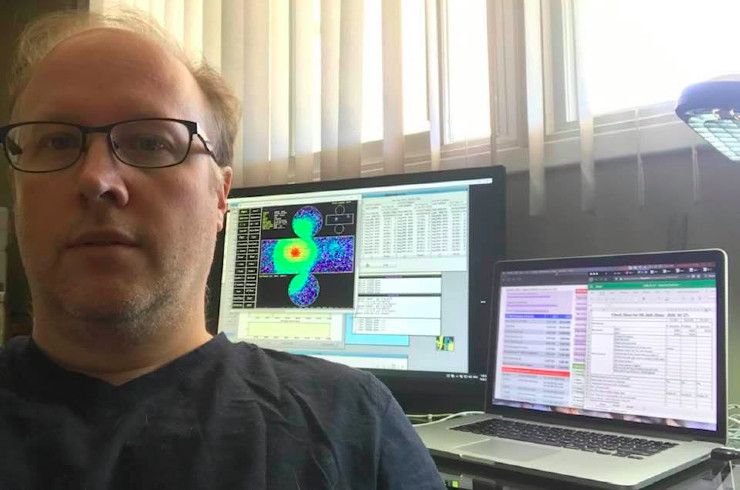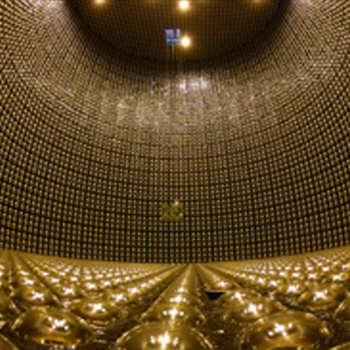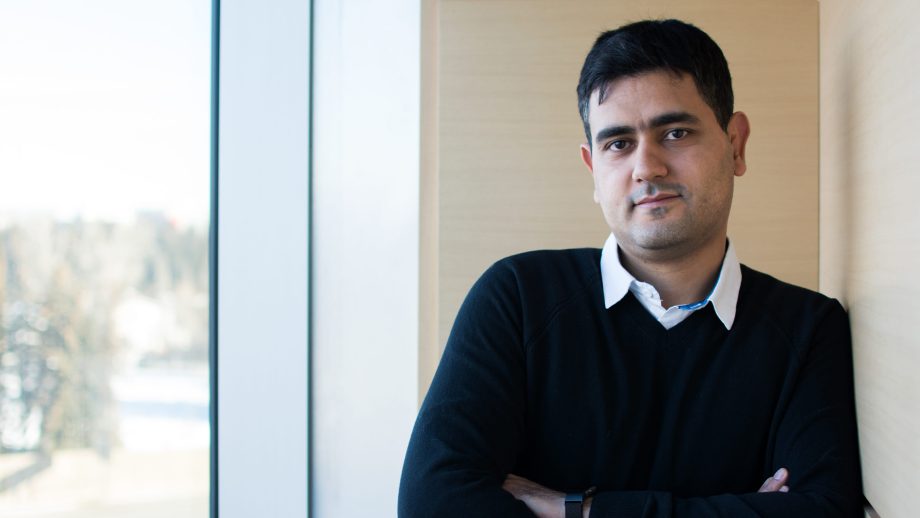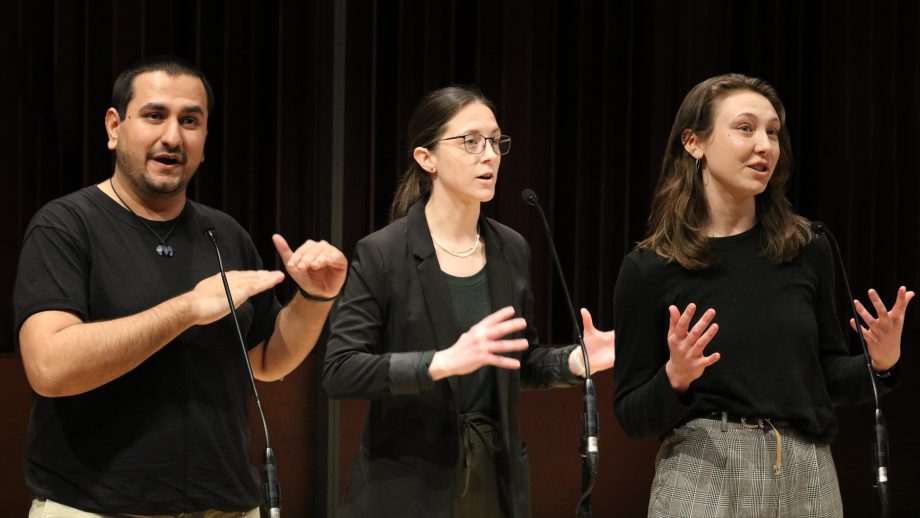Observing supernova relic neutrinos from the ‘big bang’ is on the mind of University of Winnipeg physicist Dr. Blair Jamieson. The refurbished Japanese Super-Kamiokande*(Super-K), the world’s largest water Cherenkov detector, can make these observations — and it is back in business. Several UWinnipeg students are working with Jamieson as part of the international collaboration, contributing to the calibration of Super-K in this new phase by making measurements of the locations of the light-sensitive detectors using photogrammetry.
The refurbished Super-K begins a new phase. The detector now has improved neutron detection in neutrino events, allowing more sensitive searches for diffuse supernova neutrino background (DSNB, also called supernova relic neutrinos).
If there is a core-collapse supernova in our galaxy, the added sensitivity using Gd neutron tagging will give more accurate measurements of the dynamics of the core-collapes, and the direction to the supernova.
The Gd phase of Super-K will set better limits on proton decay by improving the identification of the background neutrino events and the reactor neutrinos will be detected, allowing new analyses and the ability cut these events from other analyses.
“I am inspired by the Japanese group’s efforts to get Gd loaded into the detector, despite the COVID-19 travel restrictions,” said Jamieson. “It will be exciting to be a part of the new discoveries in physics that this new phase of the operation is enabling.”
Jamieson notes that this is the first time in the more than 30-year history of this experiment that most of the shifts moved online, rather than in person. The international group of collaborators was able to support the Japanese groups by taking a more than usual number of shifts, including Jamieson. He completed three weeks of shifts monitoring the detector remotely this summer to ensure the continued operation of Super-K during the Gd-loading.
The UWinnipeg team includes undergraduates Sidney Leggett, who will be doing a physics honours project with Jamieson. She will be studying event pile-up in the followup experiments to T2K where the neutrino beam will be three times more intense than the current one; Tapendra BC was awarded a Mitacs Research and Training Award to continue research during the school year to continue the calibration studies of the light sensitive detector locations in Super-Kamiokande. In addition, he was hired with funding from the T2K/HyperK and a Natural Sciences and Engineering Research Council of Canada (NSERC) grant; Connor Boubard, Pathway to Graduate Studies (P2GS) student who worked with Jamieson in June and participated in some Super-K shifts; and graduate student Matt Stubbs is studying the use of machine learning using graph neural networks to identify the neutron events in Super-K with Gd.
“The research experience has been very enriching, and I am glad to be a part of a groundbreaking experiment,” said BC. who is going in to his second year of physics. “I am also excited to continue the research this school year and I’m very thankful to all the supportive members and the funders.”
*The Super-K detector is a 39.3 m diameter by 41.4 m tall cylindrical tank filled with 50,000 cubic meters of water and located 1,000m underground in the Kamioka mine in Hida City, Gifu Prefecture, Japan. Super-Kamiokande detects neutrino interactions in the water using about 13,000 optical sensors (see Figure 1). The detector has been used to study the nature of atmospheric, solar, and manmade neutrinos, including the neutrino oscillation phenomenon, since 1996.






